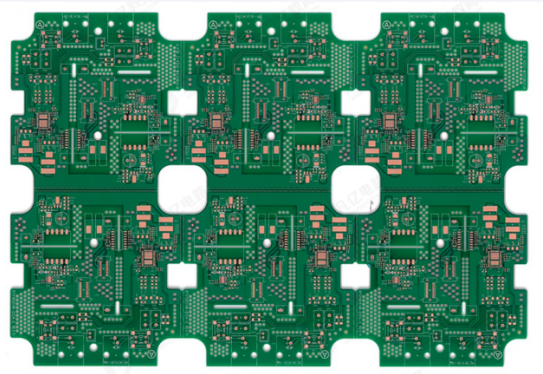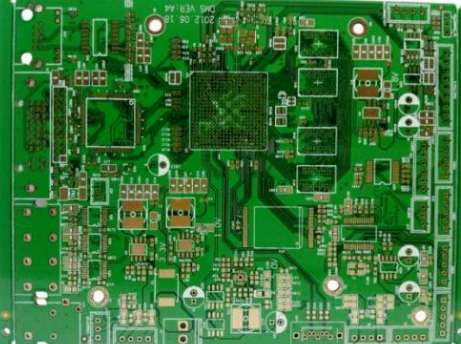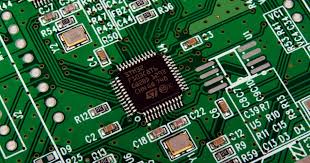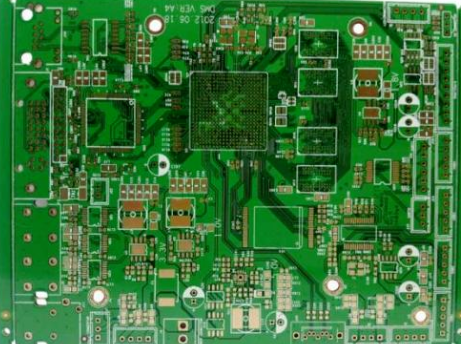Introduction to common surface processes of PCB boards
Since long-term contact of copper with air will cause copper to oxidize, we need to do some processing on the PCB surface to ensure the solderability and electrical performance of the PCB board.
Common processing techniques currently include: Hot Air Solder Leveling (HASL hot air leveling), OSP (anti-oxidation), full plate nickel gold plating, immersion gold, immersion tin, immersion silver, chemical nickel-palladium gold, and electroplated hard gold Wait, let’s give a detailed introduction to these processing techniques.
GET PCB MANUFACTURING AND ASSEMBLY QUOTE NOW!
1. Spray tin (Hot Air Solder Leveling, HASL hot air leveling)
It is a process of coating molten tin-lead solder on the PCB surface and leveling (blowing) it with heated compressed air to form a coating layer that is resistant to copper oxidation and provides good solderability. During hot air leveling, the solder and copper form a copper-tin metal compound at the junction, with a thickness of about 1 to 2 mil. The PCB needs to be immersed in molten solder during hot air leveling. The air knife blows the liquid solder flat before the solder solidifies, and can minimize the meniscus of the solder on the copper surface and prevent solder bridging. Hot air leveling is divided into two types: vertical type and horizontal type. Hot air leveling is divided into two types: vertical type and horizontal type. Generally, the horizontal type is better because its coating is relatively uniform and facilitates automated production.
① The advantages of the HASL process are: lower price and good welding performance.
② The disadvantage of the HASL process is that it is not suitable for welding pins with fine gaps and components that are too small, because the surface flatness of the spray tin plate is poor and solder beads are easily produced during the subsequent assembly process. Components with fine pitch pins are more likely to cause short circuits.


2. Organic coating (OSP anti-oxidation)
OSP is different from other surface treatment processes in that its function is to act as a barrier layer between copper and air; simply put, OSP chemically grows an organic film on the surface of clean bare copper. This film has anti-oxidation, thermal shock resistance, and moisture resistance to protect the copper surface from continuing to rust (oxidation or sulfurization, etc.) in normal environments; at the same time, it must be easily aided by subsequent welding at high temperatures. The flux is quickly removed for soldering.
The organic coating process is simple and low-cost, making it widely used in the industry. The early organic coating molecules were imidazole and benzotriazole, which had anti-rust effects. The latest molecules are mainly benzimidazole. In order to ensure that multiple reflows can be performed, it is not enough to have only one organic coating layer on the copper surface. There must be many layers. This is why liquid copper is usually added to the chemical tank. After the first layer is coated, the coating layer adsorbs copper; then the organic coating molecules of the second layer combine with the copper until twenty or even hundreds of organic coating molecules gather on the copper surface.
The general process is: degreasing–>micro-etching–>pickling–>pure water cleaning–>organic coating–>cleaning. The process control is easier than other surface treatment processes.

3. Electroless nickel plating/immersion gold
It is wrapped on the copper surface with a thick layer of nickel-gold alloy with good electrical properties and can protect the PCB for a long time. Unlike OSP, which only acts as a rust-proof barrier, it can be useful during the long-term use of PCB and achieve good electrical performance. In addition, it also has environmental tolerance that other surface treatment processes do not have.
The reason for nickel plating is that gold and copper will diffuse into each other, and the nickel layer can prevent the diffusion between them. Without the barrier of the nickel layer, gold will diffuse into copper within a few hours. Another benefit of electroless nickel/immersion gold plating is the strength of nickel. Only 5um thick nickel can control the expansion in the Z direction at high temperatures. In addition, electroless nickel plating/immersion gold can also prevent the dissolution of copper, which will be beneficial for lead-free soldering.
The general process is: depickling and cleaning–>micro-etching–>pre-soaking–>activation–>electroless nickel plating–>chemical immersion gold; there are 6 chemical tanks in the process, involving nearly a hundred kinds of For chemicals, the process is more complicated.

4. Chen Yin
The immersion silver process is between OSP and electroless nickel plating/immersion gold. The process is simpler and faster. Immersion silver does not put a thick armor on the PCB. Even if it is exposed to heat, humidity and pollution, it can still provide good electrical properties and maintain good solderability, but it will lose its luster. Because there is no nickel under the silver layer, immersion silver does not have the good physical strength of electroless nickel/immersion gold plating.
Immersion silver is a displacement reaction, which is almost a sub-micron pure silver coating. Sometimes the silver immersion process also contains some organic matter, mainly to prevent silver corrosion and eliminate silver migration problems. It is generally difficult to measure this thin layer of organic matter, and analysis shows that the weight of the organic matter is less than 1%.
5. Shen Xi
Since all solders are tin-based, the tin layer can be matched with any type of solder. From this point of view, the immersion tin process has great development prospects. However, previous PCBs were prone to tin whiskers after the immersion tin process. Tin whiskers and tin migration during the welding process would cause reliability problems, thus limiting the adoption of the immersion tin process. Later, organic additives were added to the immersed tin solution to make the tin layer structure have a granular structure, which overcomes the previous problems and also has good thermal stability and solderability.
The immersion tin process can form a flat copper-tin intermetallic compound. This characteristic makes immersion tin have the same good solderability as hot air leveling without the headache of flatness problems of hot air leveling; there is also no electroless nickel plating/sink There is a diffusion problem between gold and metal; it’s just that the immersed tin board cannot be stored for too long.
6. Electroplating hard gold
The nickel-gold plating process requires first plating a layer of nickel on the PCB surface conductor and then plating a layer of gold. Nickel plating is mainly to prevent the diffusion between gold and copper. This process is usually used on the gold fingers of the PCB. .
7. Chemical nickel-palladium gold
The main process of electroless palladium plating is to use a reducing agent to reduce palladium ions to palladium on the catalytic surface. The newly formed palladium can be called a catalyst to promote the reaction, so a palladium plating layer of any thickness can be obtained. Its advantages include good welding, smooth surface, and good thermal stability.
GET PCB AND ASSEMBLY SERVICE QUOTE NOW!
Nowadays, hot air leveling is used more often in surface treatment processes. The hot air leveling process is very good for larger components and wires with larger spacing, but it is not practical for PCBs with higher density. The flatness of hot air leveling will affect subsequent assembly, so this process is generally not used for HDI boards.
Organic coating is used in a wider range. Because it is relatively cheap, it is widely used in low-density and high-density PCBs. Therefore, organic coating is the most ideal surface treatment process when functional requirements for surface connection are required. .
Electroless nickel plating is usually used on memory boards that require relatively long connection functionality. In contrast to our organic coating, it is generally used in mobile phones and routers.
Finally, immersion silver is usually a process between organic coating and electroless nickel plating. If the PCB has certain requirements for connectivity functions and needs to reduce costs, then immersion silver is usually the best choice.
There is also a significant difference in price. Take immersion gold, lead-sprayed tin, lead-free tin-spraying and OSP processes as examples. Under other conditions being the same, the immersion gold process is generally more expensive, followed by OSP, lead-free spraying. Tin, lead spray tin is the cheapest






.png)
